 Nurturing maths awesomeness
Nurturing maths awesomeness
We offer the most comprehensive reporting anywhere. That doesn't mean it's overwhelming. Data is intuitively accessible (click anything for more details), starting with the broadest overview on the dashboard:
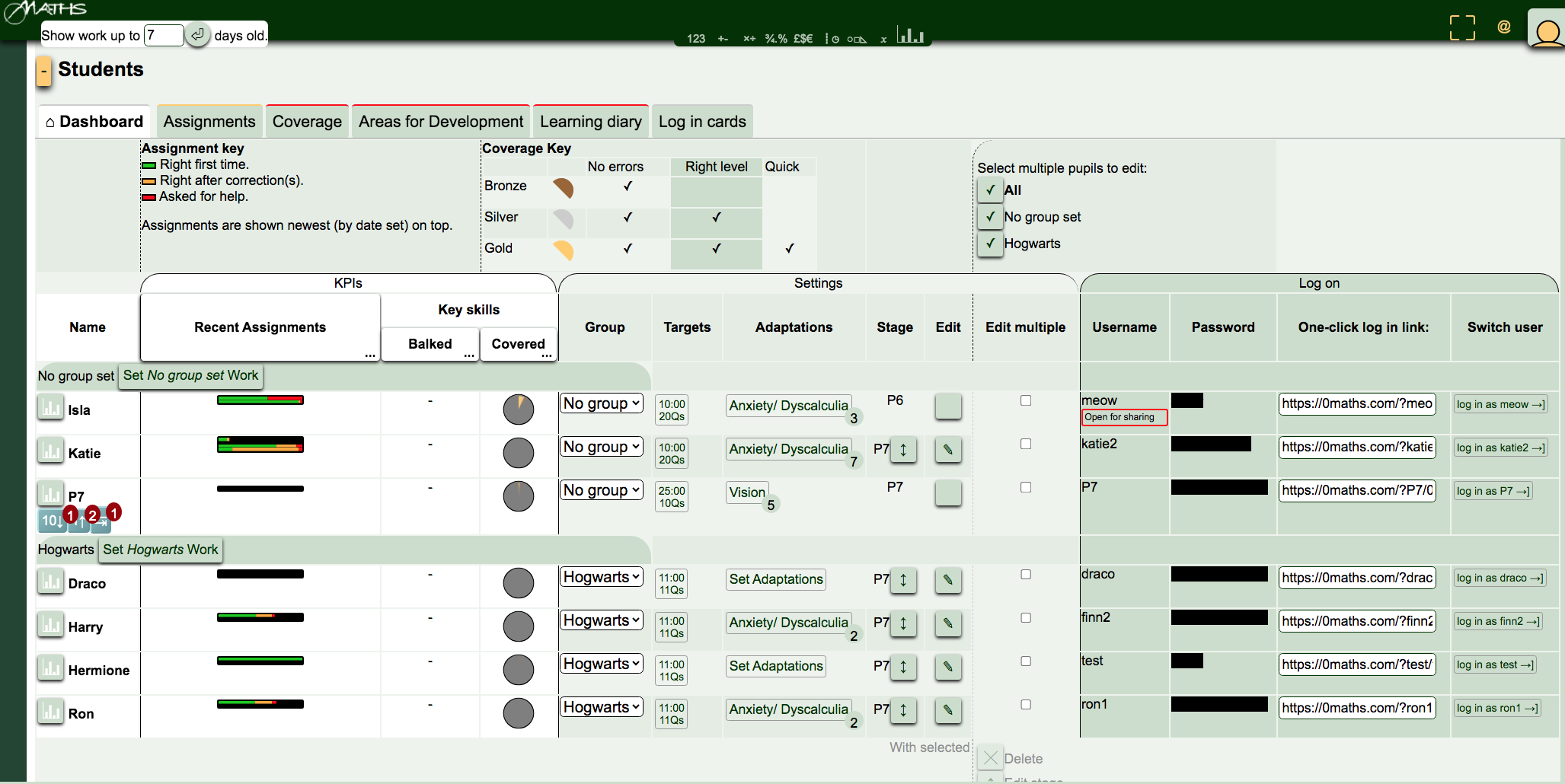
Zooming in on the Key Performance Indicators (ie the left pane in the above screenshot)...
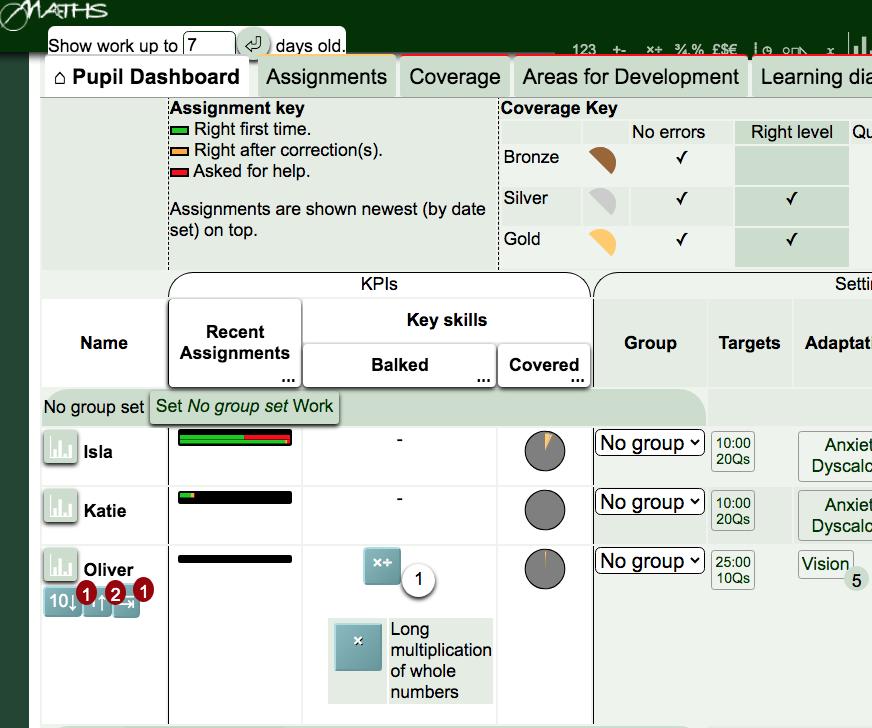
...we can see instantly that:
You want more detail? We have much more detail.
You can drill down to the details of how each pupil tackled each individual question. We can show you:
View all pupils' progress in all assignments at a glance, including Live Snapshot to see who's stalled right now, and what they're working on:
Click an assignment to view progress in as much detail as you need:
- Each question type in the assignment has a pie chart which uses a traffic light system to show you at a glance how well each question has been handled by the group:
Number of students:
answering right first time.
answering right after correction(s).
asking for help.
- The boxes under each pupil show you their progress, with each question showing as a box with a border in the above colour code.
- At a glance you can see whether they've been answering the questions at a stage-appropriate difficulty level (bronze or silver):
At least at target difficultyEasier than target difficulty- A description of the difficulty level the pupil has used is written in the table (eg. with illustration).
Learning Diary
See pupils' self directed work together with their assignments in their learning diary:
You can see at a glance how many questions they answered, how many they answered with self-corrected errors, how many worked solutions they asked for, and how long they spent at it:
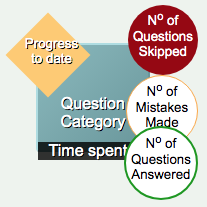
Click a specific task in the learning diary (or in the overall progress section, described below) to view their response speeds against benchmarks and compared to peers:
... and each pupil's progress over time, in terms of speeds, errors and help needed:How are pupils doing?
Overall Progress
At a glance progress against benchmarks:
Click a topic to see exactly what types of question each pupil has mastered:Note also that key skills they haven't cracked show prerequisite skills for that topic (ie Hermione-> Improper to mixed):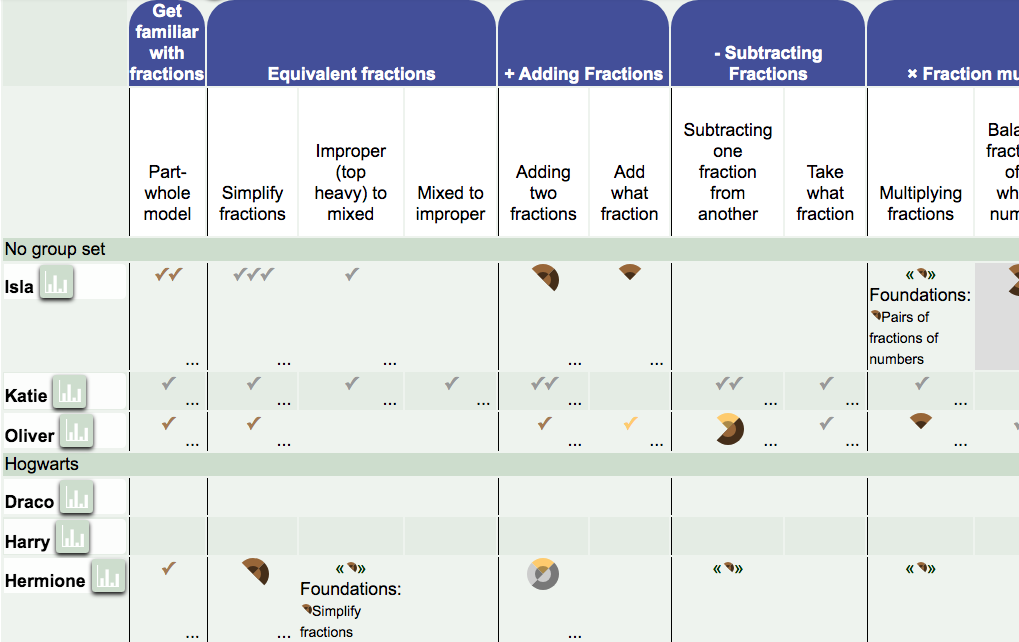
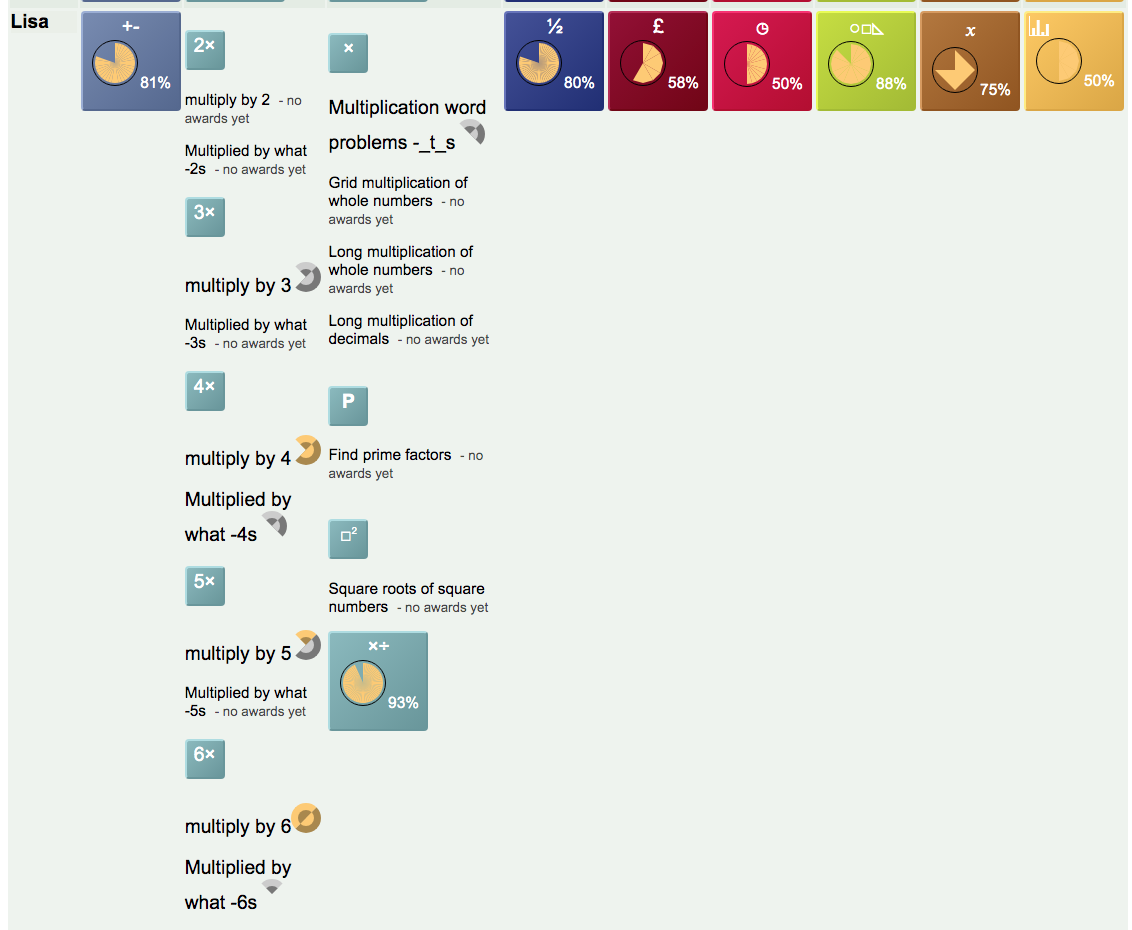
Areas for development
See weaknesses that are shared in the class and whether the weakness needs more teaching or just practice:
View each individual's proven strengths and weaknesses:
What do we tell the parents?
See the breakdown of each student's work into reportable qualities (confidence, accuracy & speed):
In a few seconds, parents can also be given a free log in that will enable them to view their children's progress directly on 0maths.
How are pupils doing what they're doing?
View freehand workings:
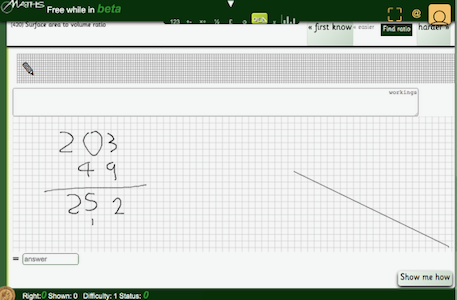
For mental maths, answering times relative to their other answers give insights into how pupils are coming up with their answers. For example, are multiplication facts coming from memory, from a strategy, or from repeated addition?
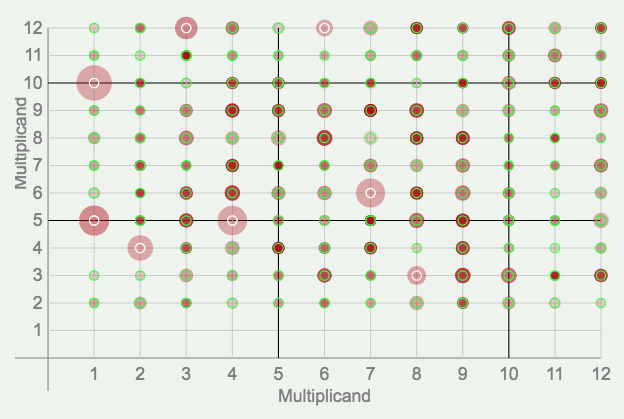
In the above, notice the solid line of slightly-too-large (ie too slow) circles both across the 9s and down the 9s. There is almost no variance at all either - 5×9 is as slow as 7×9. This is a child who once got a boost from the 9 times table finger trick, and is now being held back by it.In future releases, we'll highlight such concerns to you so you won't need to infer it from a graph. For now, this child would simply have more 9 times tables questions than other tables questions when doing all tables on 0maths.
Interpreting the data
Finally, we screen wrong answers for a wide range of repeated error types - something that wouldn't be possible with multiple choice:

Data is a bit passion here at 0maths. If you don't see what you need we would be glad to build it for you. Alternatively, you can call us to talk you through it.
© Copyright Influenca Ltd 2020 - 2025